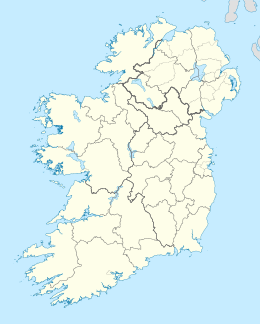Omey Island
| Native name: Iomaidh | |
|---|---|
| Geography | |
| Location | Atlantic Ocean |
| Coordinates | 53°32′07″N 10°09′27″W / 53.53528°N 10.15750°WCoordinates: 53°32′07″N 10°09′27″W / 53.53528°N 10.15750°W |
| Administration | |
| Province | Connacht |
| County | Galway |
| Demographics | |
| Population | 0 (2017) |
| Additional information | |
| tidal island | |
Omey Island (Irish: Iomaidh) is a tidal island situated near Claddaghduff on the western edge of Connemara in County Galway, Ireland. From the mainland the island is inconspicuous and almost hidden. It is possible to drive or walk across a large sandy strand to the island by following the arrowed signs. At high tide, the water is deep enough to cover a car.
In the early-to-mid-1990s a team of archaeologists from University College Dublin began work to study the monastic heritage of the island, long known for being the site of a monastery and settlement reportedly founded by the prodigious St Feichin. In fact, its name derives from the Irish Iomaidh Feichín meaning Feichín's bed or seat.
The excavation gave new insights into the life of early Christianity in Ireland and included one of the few known burials of a woman within a monastic burial ground. The site is believed to date from the early 6th century.
The island of Omey remains a place of devotion to Saint Feichín to this day, with a Holy Well situated by the western edge and several other key landmarks of piety. This includes a later medieval parish church - with the majority of its vast stones still very much in place (having been buried in centuries of sand until the parish priest took matters into his own hands and, with the help of locals, dug up the area surrounding it).
St Feichín is reported to have established many such communities across the west of Ireland and is considered one of the most important of the early founders of the rich tradition of Irish Christianity.
The O'Tooles of Leinster settled here in the early 1500s, under the protection of the O'Flahertys. During the Cromwellian settlements the Browns and D'Arcys took over. In the early 1800s two townlands on Omey belonged to the Martins of Ballynahinch and one to the D'Arcys of Clifden.
John MacNeice, a Church of Ireland bishop famous for his opposition to the Ulster Covenant was born and raised on Omey.
...
Wikipedia

